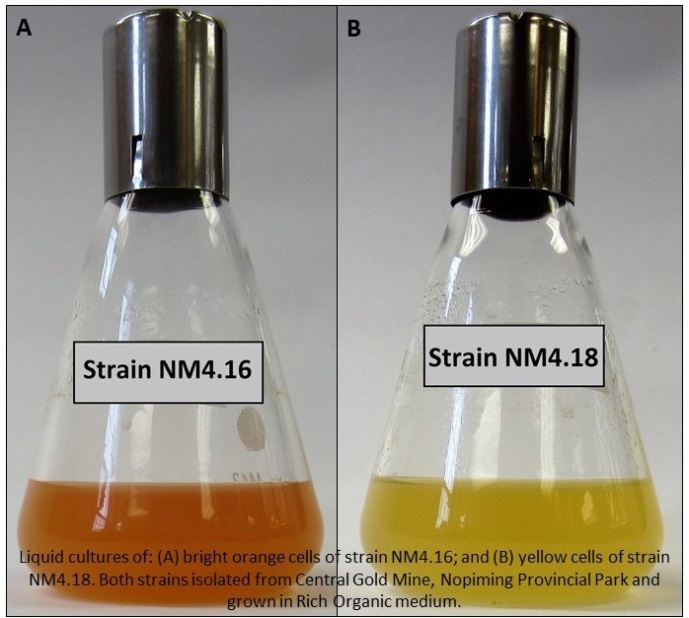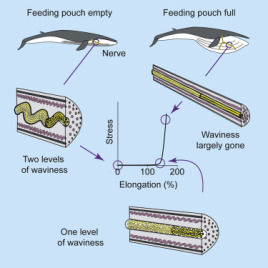
Two strains isolated from the Nopiming Provincial Park Central Gold Mine tailings, grown in liquid culture.
(Image by Dr. Vladimir Yurkov)
Little life is seen in environments with low oxygen content and high metalloid pollution. The microorganisms that do survive in such extreme conditions are incredibly helpful to scientists, who can use the bacteria’s natural reduction of toxic materials to clean up heavily polluted areas. Such bacteria were recently discovered in an old Manitoba gold mine, which has been abandoned for over 75 years. Researchers took several samples from the mine’s tailings and isolated several bacterial strains. All of them were highly resistant to toxic metalloid oxides, and showed the ability to convert toxic tellurite to the less toxic elemental form, tellurium.
Authors:
Elizabeth Hughes, Breanne Head, Chris Maltman, Michele Piercey-Normore, Vladimir Yurkov
Corresponding author:
Vladimir Yurkov, Department of Microbiology, University of Manitoba, Email: Vladimir.Yurkov@umanitoba.ca
Original paper published in Canadian Journal of Microbiology on February 14, 2017.


